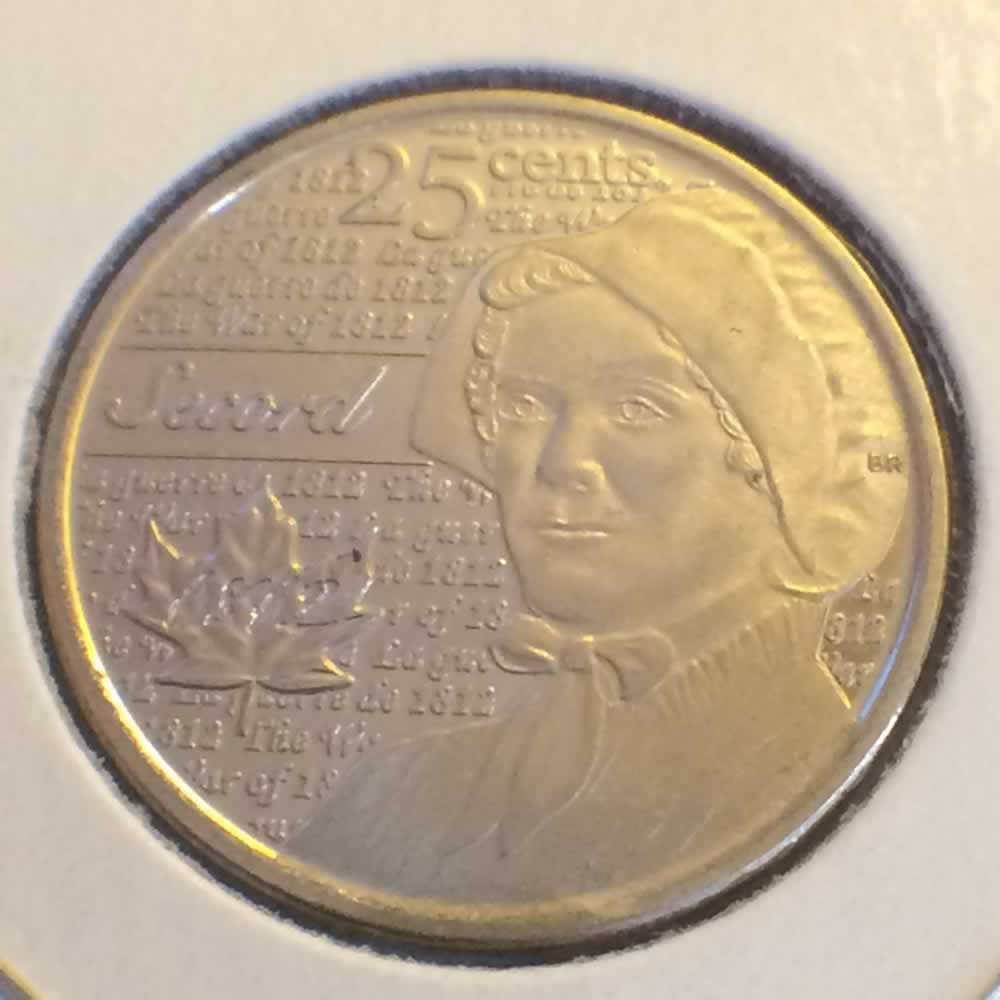Key Figures of the War of 1812
On June 18, 1812, the United States declared war on Great Britain, initiating two years of intense fighting. British North American forces fought tenaciously to preserve the way of life of a future Canada. In recognition of their bravery, the Mint has created five circulation coins to commemorate these defining moments of the War of 1812.
Major-General Sir Isaac Brock
Remembered as the “Hero of Upper Canada,” for his leadership and bravery during the War of 1812, Major-General Sir Isaac Brock holds a special place in Canada's history. Understanding the importance of his Aboriginal allies in the conflict, Brock joined Tecumseh to take Fort Detroit from their American opponents, despite being outnumbered nearly two to one. He cemented his place in the history books during the Battle of Queenston Heights on October 13, 1812, when American forces crossed the Niagara River to attack. Arriving hastily from Fort George to join the fray, Brock led a charge to retake a crucial gun battery on the Heights, when, while leading his troops, he was shot and killed. British forces won the day though, with the aid of reinforcements and their Aboriginal allies. The victory at Queenston Heights was not only a turning point in the War of 1812, but profoundly influenced Canada's national identity.
Tecumseh
Chief Tecumseh was born near Springfield, Ohio. His name, which meant both “shooting star” and “crouching panther,” proved prescient, for he became a highly driven and dynamic leader and warrior. Tecumseh dedicated his life to spreading a message of unification among Native North Americans, and building support for a self-governing Aboriginal Territory. During the War of 1812, he joined forces with the British to defend British North America and became an important ally of Major-General Sir Isaac Brock. After their joint victory at For Detroit, a strong mutual respect bonded the two men until their respective deaths in battle. Tecumseh was one of many who fell during the battle at Moraviantown (also known as the Battle of the Thames), when British troops retreated leaving only 500 Aboriginal warriors to fight more than 3,000 American soldiers. His death, and the legacy of his life, immortalized him as a hero of Canadians.
Charles-Michel De SalaBerry
Born in Beauport, Lower Canada to a family with a history of military service, Charles-Michel de Salaberry enlisted for military service at the age of fourteen. In 1812, de Salaberry took command of the Voltigeurs Canadiens—a light infantry unit that would become one of the most well-known units to fight in the War of 1812. Under de Salaberry's leadership, the Voltigeurs and their Aboriginal allies famously fended off the attack of a substantially larger American force along the banks of the Châteauguay River in October 1813. This victory, among others, secured their place, and Charles-Michel de Salaberry's, in Canada's history.
Laura Second
The story of Canadian heroine Laura Secord is one of the War of 1812's most famous. On June 20 or 21, 1813, Secord overhead American officers discussing their intention to ambush a British outpost at the DeCou House, near Beaver Dams, and capture its commanding officer Lieutenant James FitzGibbon. Early the next morning, Laura set out on foot to warn Lieutenant FitzGibbon, who was roughly 30 kilometers away. She successfully delivered her message first to about 400 First Nations warriors, then to FitzGibbon on June 22, 1813. On June 24, 1813, when American forces thought they had Beaver Dams in their grasp, they were ambused by the First Nations warriors. FitzGibbon's 50 British soldiers arrived in time to accept the American surrender. Although Secord did not receive public recognition for her brave actions until shortly before her death, her courage, and resolution in the face of adversity secured her a place in Canada's history.
REF
 Canada 2013 Laura Second Quarter ( C25C )
Canada 2013 Laura Second Quarter ( C25C )


